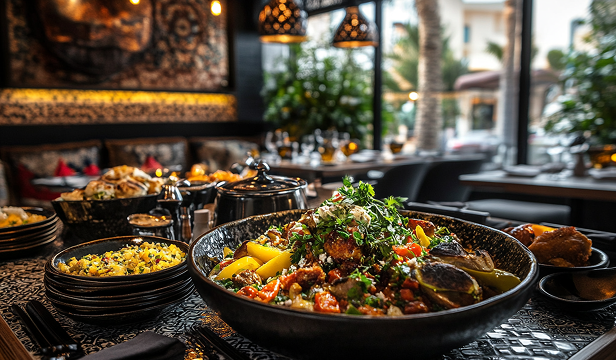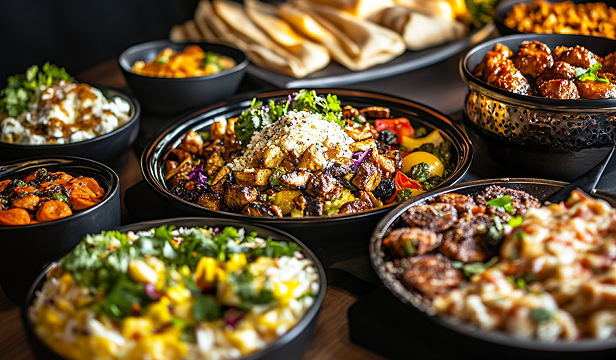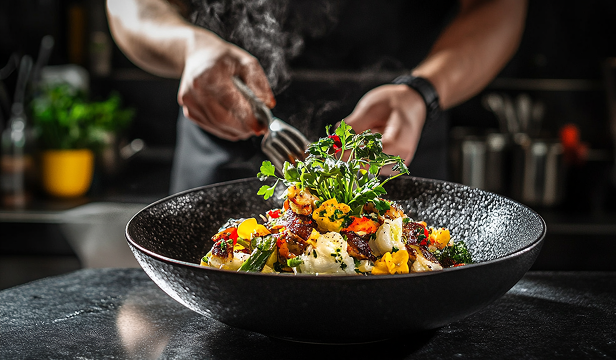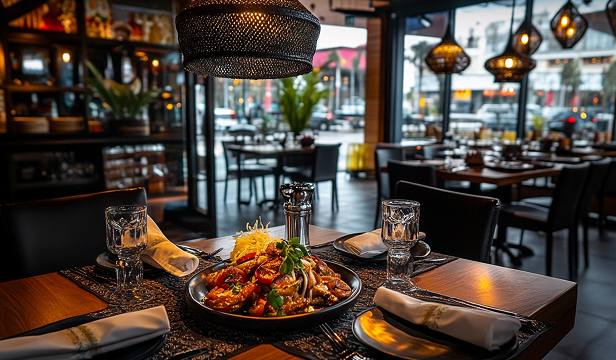Introduction Middle Eastern art is renowned for its intricate patterns, rich colours, and deep cultural…

How Traditional Middle Eastern Mosaics Influence Restaurant Interiors
Introduction
Traditional Middle Eastern mosaics have long been celebrated for their intricate patterns, rich history, and cultural significance. These artistic elements, which can be found in mosques, palaces, and historic marketplaces, have seamlessly transitioned into modern restaurant interiors. By incorporating mosaic art, restaurants can create immersive environments that blend heritage with contemporary aesthetics, offering guests an authentic and visually stunning dining experience.
The Historical Significance of Middle Eastern Mosaics
Middle Eastern mosaics date back to ancient civilizations such as the Mesopotamians, Persians, and Ottomans, where they were used to decorate temples, homes, and public spaces. Some defining characteristics include:
- Geometric Patterns: Repetitive, symmetrical designs that create a sense of harmony and balance.
- Floral and Arabesque Motifs: Inspired by nature, these patterns evoke a sense of elegance and intricacy.
- Rich Colour Palettes: Deep blues, golds, reds, and greens are common, reflecting the opulence of Middle Eastern artistry.
- Handcrafted Precision: Traditional mosaics are painstakingly arranged by artisans, a craft passed down through generations.
Impact on Restaurant Interiors
By integrating Middle Eastern mosaics into restaurant design, establishments can enhance their ambiance in several ways:
1. Statement Walls & Feature Pieces
Mosaic-tiled walls serve as captivating focal points, setting the tone for the restaurant’s aesthetic. Whether used in entryways, dining areas, or bar backsplashes, these walls create a striking first impression.
2. Flooring with Mosaic Influence
Restaurants often incorporate mosaic-inspired flooring, echoing traditional Middle Eastern patterns to add depth and texture. These designs guide guests through the space while maintaining cultural authenticity.
3. Tabletops & Decorative Accents
Handcrafted mosaic tabletops provide a unique dining surface that enhances the cultural connection. Complementary decorative elements such as mosaic vases, candle holders, and wall art further enrich the interior.
4. Ceiling & Lighting Fixtures
Ornate mosaic chandeliers and ceiling designs evoke an atmosphere of grandeur and warmth. Light reflecting off mosaic surfaces enhances the space’s elegance, creating an inviting dining environment.
Modern Adaptations of Mosaic Art in Contemporary Restaurants
Today, many restaurants reimagine traditional mosaic elements with a contemporary twist:
- Minimalist Colour Schemes: Modern designers use neutral or monochrome mosaics for a sleek and sophisticated look.
- Mixed Materials: Combining mosaics with wood, metal, or glass introduces texture and contrast.
- Custom Digital Mosaics: Advancements in digital printing allow for custom mosaic-inspired patterns, bringing flexibility to modern restaurant interiors.
Notable Restaurants Showcasing Middle Eastern Mosaics
Several renowned dining establishments integrate mosaic art into their interiors:
- Mosaic Restaurant (Dubai): Known for its elaborate tilework and immersive Middle Eastern ambiance.
- Dar Yacout (Marrakech): Features hand-laid mosaics that transport guests to a traditional Moroccan setting.
- Alhambra Restaurant (London): Blends classic Andalusian mosaic patterns with contemporary fine dining aesthetics.
Conclusion
Traditional Middle Eastern mosaics continue to inspire restaurant interiors, bridging the gap between cultural heritage and modern design. Their intricate beauty, historical significance, and adaptability make them an invaluable element in creating captivating and immersive dining spaces. Whether through bold feature walls, intricate flooring, or delicate accents, mosaics remain a timeless and influential design choice in the culinary world.



